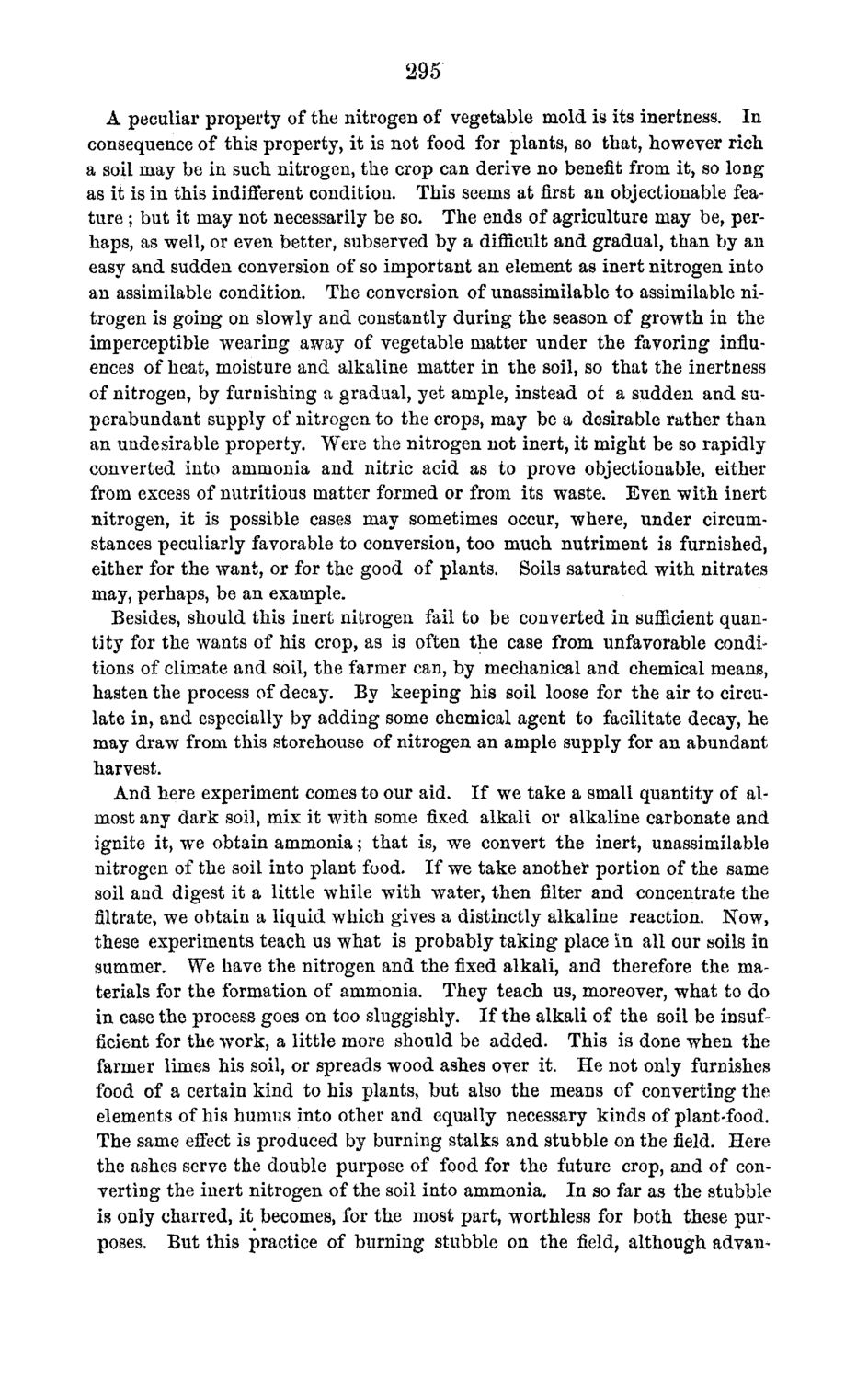| |
| |
Caption: Board of Trustees Minutes - 1870
This is a reduced-resolution page image for fast online browsing.

EXTRACTED TEXT FROM PAGE:
295 A peculiar property of the nitrogen of vegetable mold is its inertness. In consequence of this property, it is not food for plants, so that, however rich a soil may be in such nitrogen, the crop can derive no benefit from it, so long as it is in this indifferent condition. This seems at first an objectionable feature ; but it may not necessarily be so. The ends of agriculture may be, perhaps, as well, or even better, subserved by a difficult and gradual, than by an easy and sudden conversion of so important an element as inert nitrogen into an assimilable condition. The conversion of unassimilable to assimilable nitrogen is going on slowly and constantly during the season of growth in the imperceptible wearing away of vegetable matter under the favoring influences of heat, moisture and alkaline matter in the soil, so that the inertness of nitrogen, by furnishing a gradual, yet ample, instead of a sudden and superabundant supply of nitrogen to the crops, may be a desirable rather than an undesirable property. Were the nitrogen not inert, it might be so rapidly converted into ammonia and nitric acid as to prove objectionable, either from excess of nutritious matter formed or from its waste. Even with inert nitrogen, it is possible cases may sometimes occur, where, under circumstances peculiarly favorable to conversion, too much nutriment is furnished, either for the want, or for the good of plants. Soils saturated with nitrates may, perhaps, be an example. Besides, should this inert nitrogen fail to be converted in sufficient quantity for the wants of his crop, as is often the case from unfavorable conditions of climate and soil, the farmer can, by mechanical and chemical means, hasten the process of decay. By keeping his soil loose for the air to circulate in, and especially by adding some chemical agent to facilitate decay, he may draw from this storehouse of nitrogen an ample supply for an abundant harvest. And here experiment comes to our aid. If we take a small quantity of almost any dark soil, mix it with some fixed alkali or alkaline carbonate and ignite it, wTe obtain ammonia; that is, we convert the inert, unassimilable nitrogen of the soil into plant food. If we take another portion of the same soil and digest it a little while with water, then filter and concentrate the filtrate, we obtain a liquid which gives a distinctly alkaline reaction. Kow, these experiments teach us what is probably taking place in all our soils in summer. We have the nitrogen and the fixed alkali, and therefore the materials for the formation of ammonia. They teach us, moreover, what to do in case the process goes on too sluggishly. If the alkali of the soil be insufficient for the work, a little more should be added. This is done when the farmer limes his soil, or spreads wood ashes over it. He not only furnishes food of a certain kind to his plants, but also the means of converting the elements of his humus into other and equally necessary kinds of plant-food. The same effect is produced by burning stalks and stubble on the field. Here the ashes serve the double purpose of food for the future crop, and of converting the inert nitrogen of the soil into ammonia. In so far as the stubble is only charred, it becomes, for the most part, worthless for both these purposes, But this practice of burning stubble on the field, although advan-
| |